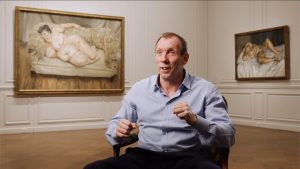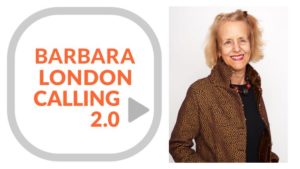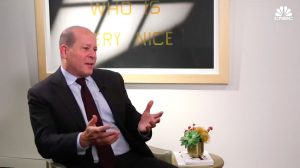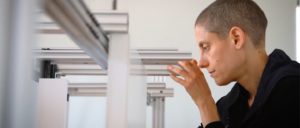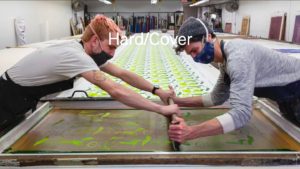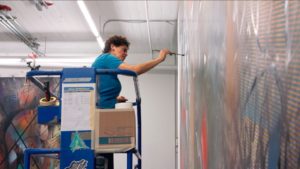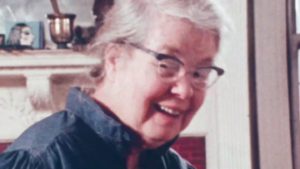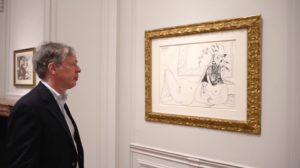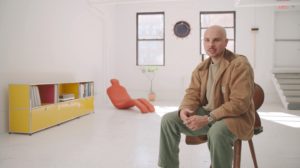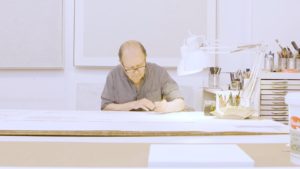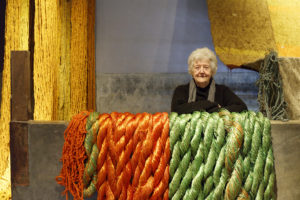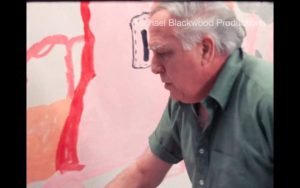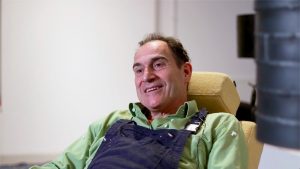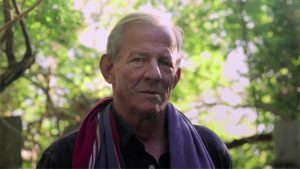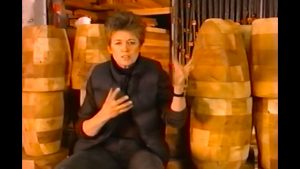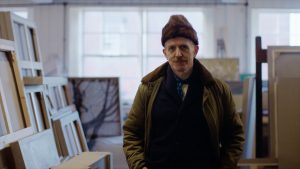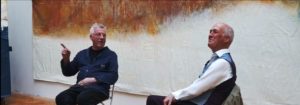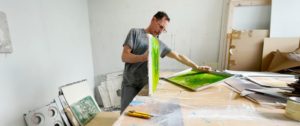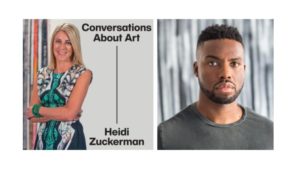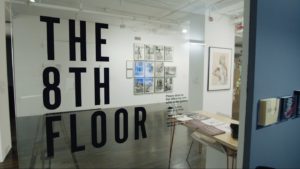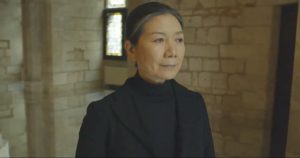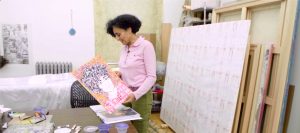“Jerry Saltz in one article said that he’d never heard of somebody calling himself a ‘drawer.’ I cannot say, ‘I’m not a painter, I’m a drawer.’ Usually you say, ‘I’m an artist, I’m a painter, but I make mainly drawings.’ I see myself as basically a line-maker. All my life I’ve made lines – in cartoon, or nude, or landscape. I’ve never made paintings – I don’t know how to paint.” — Jacob El Hanani
Online jpegs come nowhere close to being able to convey the incredible works of Jacob El Hanani – “the grandfather of micro-drawing” – now on view at Acquavella Galleries in New York (through June 18, 2021). Not only is Jacob El Hanani: Recent Works on Canvas a “must see in person” exhibit, it is very nearly a “can only see in person” exhibit. However, thanks to this video from Acquavella Galleries, we have the opportunity to visit El Hanani in his SoHo studio and witness the incredible detail and devotion that goes into the creation of his drawings, as he ruminates on his history and what drives him as a “drawer.”
From Acquavella Galleries:
El Hanani is often referred to as “the grandfather of micro-drawing,” and his works serve as a record of the artist’s devoted creative process. Marked by the quiet intensity of bold, fluid patterns achieved through thousands of delicate linear strokes, his abstract works are suggestive of atmospheric landscape, topographical maps, and intricate woven textiles. Employing both abstract forms and scripted letters of the Hebrew alphabet, El Hanani’s drawings reflect on vast cultural, historical, and personal forces that have informed his work. The social restrictions of 2020 presented El Hanani (already a devoted craftsman who lives in a home studio in SoHo, New York City) with a unique challenge, or rather an opportunity, to spend even more time in the studio further mastering his mark-making practice. This has culminated in a body of work representative of the long, reflective, and often strenuous time in isolation that is mirrored in his steadfast, meditative practice and its resulting works.
This body of work—slow, exacting, and unforgiving – underscores a decades-long practice of extraordinary self-discipline. Since 1974, when he moved into the studio where he still lives and works today, El Hanani has spent many long, quiet days working, removed from the noise and bustle of the city below. Throughout his career, El Hanani has quietly persisted by delivering intricate, self-immersive works, as many of his conceptual and minimalist contemporaries pushed the idea of removing the artist from the artwork.
Whether he is using letters of the Hebrew alphabet or lines, El Hanani’s work is inspired by the long tradition of Jewish micrography. In the middle ages, Jewish scribes began to decorate manuscripts with images and designs made of very small Hebrew letters. Without the use of religious figures, Jewish scribes utilized micrography as an interpretation of image making. Similar to El Hanani’s modern day works, these ancient micrographic figures are almost illegible, but unlike these texts, the letters in El Hanani’s work have become more medium than message, yet still echo of a devotional act.
Video by our friends at Bower Blue.


